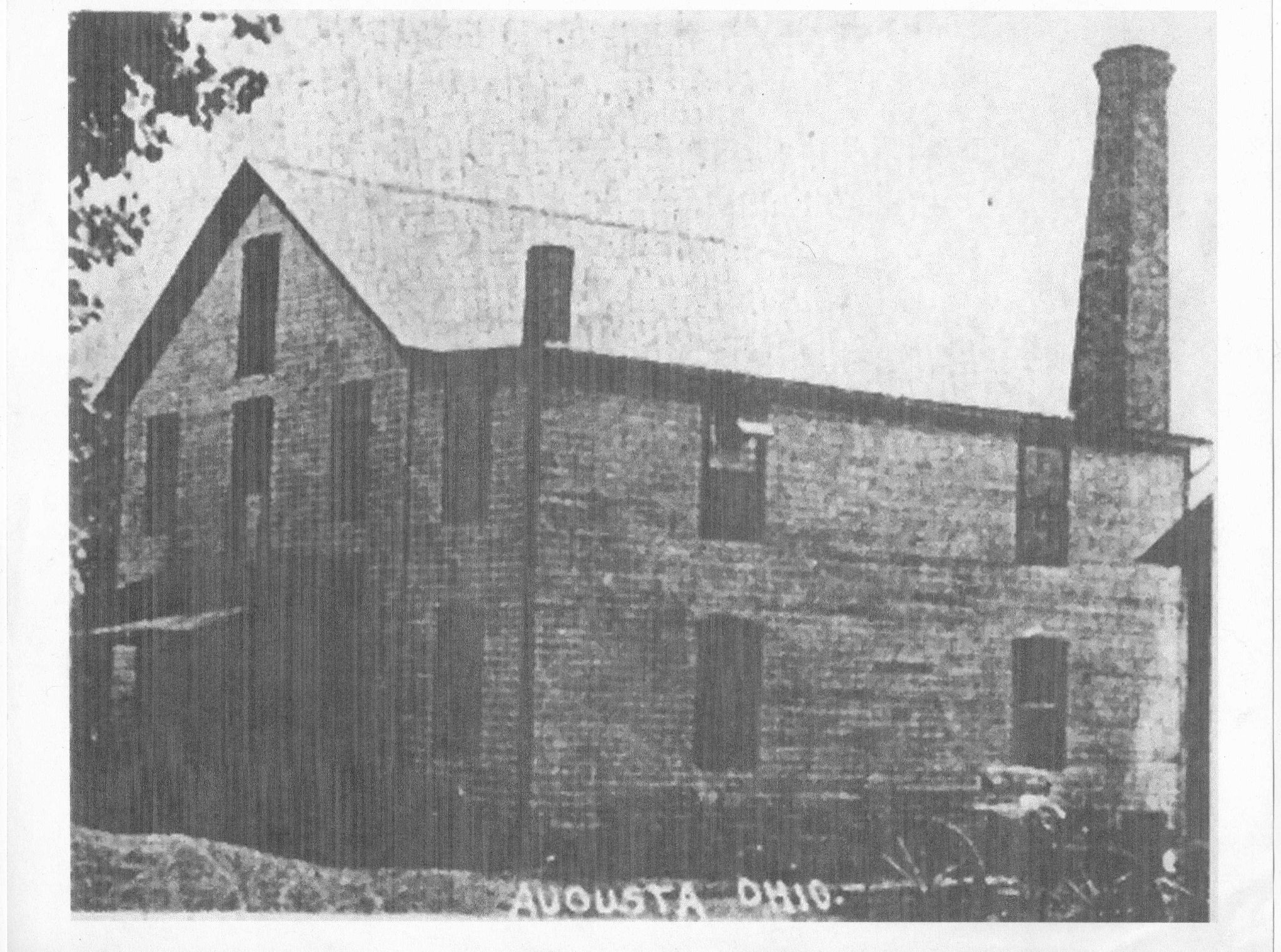by Taylor C. Woodward

THE AUGUSTA MILL

Records show that on July 28,
1876,
Jehu Manfull sold to Edwin Cyrus, lot no. 64 of the Manfull
addition to the village of Augusta, including the privilege of using
what water goes to waste from the Manfull spring for $100. For
reasons unknown, Edwin Cyrus sold and transferred this at the same
price the same year to
Alexander Cunningham, who built the Augusta Mill. Edwin
Cyrus, a colored man, who was a miller by trade, assisted
Mr. Cunningham in operating the mill for an unknown number of
years.
|
|
Alexander Cunningham owned and operated the mill until April 1886, when he sold Lot 64, also a part of Lot 59 to his son Sutton Cunningham for $4500. They made flour with a brand name on the sacks of Farmers and Mechanics Good Luck Flour - Cunningham - Augusta, Ohio (with the picture of a horse shoe on each sack.) Sutton Cunningham erected a building on the east side of the mill, where they operated a cider press, and also made apple butter, using steam from the boiler in the mill in making the apple butter. It is said they did a large business in the cider making season, and many times would run into the late hours of the night. During the Cunninghams' period of operations, they had employed B. K. Cunningham as engineer, Thomas Iden, John Dowling as millers, Harve Phillips, and probably others.
On April 1, 1893, William G. Mitzel of East Rochester started operating the Augusta Mill, which he had leased from Sutton Cunningham, and continued to operate until Feb. 1896, when Mr. Cunningham sold the mill to William G. and Charles Mitzel for $2500. They continued to operate the mill until August 1900 when Charles sold his share to his father, who continued operating the mill until Feb. 1902, when he sold out to Edward S. Johnson for $2000.
|
|
The Mitzels made flour, using the brand name of "Grandma's Choice None Better" (with a photo of grandma on each sack), every sack warranted, William G. Mitzel and Son, Augusta, Ohio. This brand name was also used with the name of Mitzel and Johnson on each sack.
Mr. Johnson being joined some time later by his son A. H. Johnson, continued to operate the mill until June 1911, when they sold it to F. W. Bortner (et al) for $1800, who operated the mill until May 1912 when the mill burned down.
In Sept. 1913, F. W. Bortner, W. H. Glen and S. L. Newbold sold the lots the mill was located on to Mrs. Sidney Rowley.
The Augusta Mill had been a great benefit to many of the Augusta Township farmers, by making a market for a large amount of their wheat, a source of cheap feed from the byproducts of making flour such as bran, mids., etc., a near location to get their grinding done, and a market for a large amount of the coal that was mined locally, when it was hauled with horses and wagons, and distance meant more than it does today.


